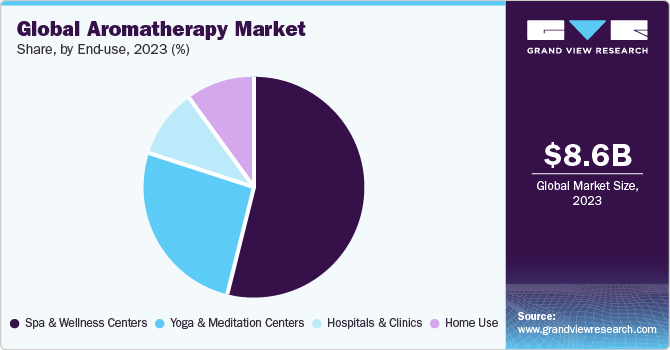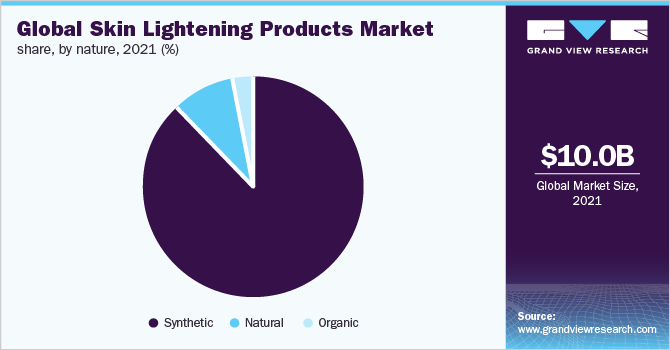
Aromatherapy Industry Overview
The global aromatherapy market size is anticipated to reach USD 3.7 billion by 2028, according to a new report by Grand View Research, Inc. The market is expected to expand at a CAGR of 11.6% from 2021 to 2028. Rising awareness regarding the positive impact of essential oils on the well-being and health of consumers coupled with the growing demand for natural products is likely to boost aromatherapy market growth over the forecast period.
Increased focus on mental health coupled with the rising adoption of essential oils for the management of mental health problems is expected to drive the market. Furthermore, the growing acceptance of aromatherapy in medical facilities, including clinics and hospitals, is anticipated to augment the demand for aromatherapy diffusers and essential oils.
Aromatherapy Market Segmentation
Grand View Research has segmented the global aromatherapy market on the basis of product, mode of delivery, application, distribution channel, end-use, and region:
Based on the Product Insights, the market is segmented into Consumables, Equipment.
- The consumables segment led the market for aromatherapy and accounted for 78.2% of the global revenue share in 2020, owing to the rising adoption of essential oils as therapeutic agents for various disease conditions. Consumables include essential oils and carrier oils.
- Essential oils are volatile organic oils, which are extracted from plants with the help of distillation. This procedure involves the use of water or steam for the extraction of oils from different parts of a plant, including leaves, petals, stems, roots, or bark.
- The demand for equipment is estimated to witness a CAGR of 8.8% over the forecast period. The introduction of different types of diffusers has led to an increase in the preference for this equipment as they help gain therapeutic benefits from essential oils.
Based on the Mode of Delivery Insights, the market is segmented into Topical Application, Aerial Diffusion, Direct Inhalation.
- The topical application segment led the market for aromatherapy and accounted for a revenue share of 42.3% in 2020. Topical application helps achieve higher therapeutic properties. Some essential oils are used for various skin- and hair-related problems, including acne, and to improve skin tone.
- Direct inhalation is expected to witness attractive growth over the forecast period due to its effectiveness in treating various respiratory disorders. Cold and cough, sinusitis and bronchial congestion, influenza, and sore throat are some of the medical conditions that require direct inhalation of essential oils.
- The aerial diffusion segment is anticipated to witness growth at an estimated CAGR of 11.7% over the forecast period. The preference for aerial diffusion is increasing with the growing demand for diffusers for aromatherapy.
- The adoption of aerial diffusion mode of delivery for aromatherapy through heat diffusers, nebulizer diffusers, ultrasonic diffusers, and evaporative oil diffusers is expected to increase amidst the COVID-19 outbreak.
Based on the Application Insights, the market is segmented into Relaxation, Skin & Hair Care, Pain Management, Cold & Cough, Insomnia, Scar Management, Others.
- The relaxation segment led the market for aromatherapy and accounted for 23.2% of the revenue share in 2020, attributed to the rising number of people suffering from anxiety. Aromatherapy oils are effective in relaxing people, which balances the overactive mental state of the consumers.
- Rising incidences of skin conditions are likely to drive the demand for aromatherapy products. People with skin rashes often seek aromatherapy, which helps in nourishing the skin and reducing inflammation.
- The demand for aromatherapy in scar management is likely to witness a CAGR of 9.3% over the forecast period. Burn injuries leave noticeable hypertrophic burn scars, which remain even after the pain has subsided. Moreover, stitches after surgeries also lead to scars.
- Other applications of aromatherapy include improving digestion and treating cardiovascular disorders, respiratory problems, and gastrointestinal infections. Moreover, they also help maintain proper liver and gallbladder functions, prevent motion sickness, weight management, and treat nervous disorders.
Based on the Distribution Channel Insights, the market is segmented into DTC, B2B.
- The Direct-to-Consumer (DTC) segment led the market for aromatherapy and accounted for 66.7% of the global revenue share in 2020. Direct-to-customer involves multilevel marketing of aromatherapy products and includes the retail as well as the e-commerce segments.
- Enhanced understanding and better know-how of products are anticipated to drive aromatherapy demand through the retail segment. The availability of essential oils at retail stores such as Target and Walmart enables consumers to choose between various products according to their tastes.
- Rapid growth in the e-commerce sector has positively impacted market growth by facilitating consumers to buy products at their convenience. Manufacturers and other online retailers typically offer products at a discounted rate on their websites to boost sales. The ease of buying and availability of a wide range of products significantly affects the segment growth.
- The Business-to-Business (B2B) distribution channel segment is likely to witness a CAGR of 10.9% over the forecast period. The B2B segment includes the transactions between manufacturers selling aromatherapy products and different entities such as commercial organizations.
Based on the End-use Insights, the market is segmented into Home Use, Spa & Wellness Centers, Hospitals & Clinics, Yoga & Meditation Centers.
- The home-use segment led the aromatherapy market and accounted for the largest revenue share of 40.0% in 2020. Aromatherapy is preferred over other forms of therapeutic treatments owing to its non-invasive characteristic. Thus, most patients prescribed essential oils for diseases tend to use aromatherapy products in the vicinity of their homes.
- Hospitals and clinics are also the key end-users of aromatherapy owing to its ability to induce improved blood circulation; reduce nausea, anxiety, and stress; ease digestion; and aid in speedy recovery.
- Aromatherapy is used in spa and wellness centers for relaxation and stress relief as well as to promote stimulation of circulatory, lymphatic, and musculoskeletal systems, thereby enhancing immunity.
Aromatherapy Regional Outlook
- North America
- Europe
- Asia Pacific
- Latin America
- Middle East & Africa (MEA)
Key Companies Profile & Market Share Insights
The market consists largely of local players; of which a few operate globally. New product launches, mergers and acquisitions, partnerships, and collaborations are key strategies adopted by leading companies for sustained growth.
Some prominent players in the global aromatherapy market include:
- Young Living Essential Oils
- Edens Garden
- Mountain Rose Herbs
- Plant Therapy Essential Oils
- Rocky Mountain Oils, LLC
- FLORIHANA
- Falcon
- Biolandes
- Stadler Form Aktiengesellschaft
- Hubmar International
- SpaRoom
Order a free sample PDF of the Aromatherapy Market Intelligence Study, published by Grand View Research.
About Grand View Research
Grand View Research, U.S.-based market research and consulting company, provides syndicated as well as customized research reports and consulting services. Registered in California and headquartered in San Francisco, the company comprises over 425 analysts and consultants, adding more than 1200 market research reports to its vast database each year. These reports offer in-depth analysis on 46 industries across 25 major countries worldwide. With the help of an interactive market intelligence platform, Grand View Research Helps Fortune 500 companies and renowned academic institutes understand the global and regional business environment and gauge the opportunities that lie ahead.
